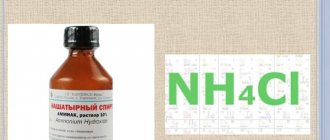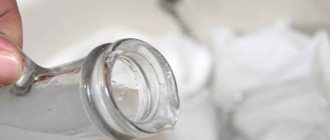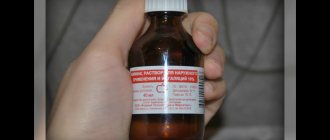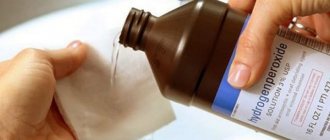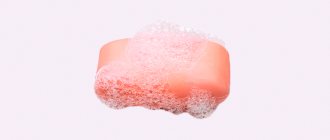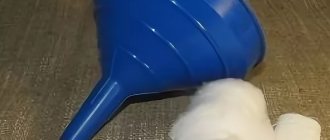Options such as:
- wax removal;
- sugaring;
- laser removal.
All modern newfangled methods have a lot of disadvantages:
- the procedures are generally quite painful;
- the effect after the procedure does not last long, which leads to the frequency of these operations;
- skin irritation almost always occurs;
- each method has its own side effects and contraindications;
- Most modern hair removal methods are only available by visiting specialists.
Differences between ammonia and ammonia
The main difference between ammonia and ammonia is their initial state of aggregation. Ammonia is a gas that liquefies at a temperature of -33 degrees Celsius. As for ammonia, this substance is a liquid . In addition, such a product is sometimes called an ammonia solution. The only similarity can be considered an unpleasant ammonia smell.
It should be noted that for household needs, ammonia is obtained by mixing water and ammonia solution. For medical purposes, the process of forming the product is slightly different and consists of 2 steps. First you need to obtain ammonium hydrate, and then make ammonia from it.
Chemical properties of H2O2.
Hydrogen peroxide is an acid, but a very weak one. The dissociation constant of H2O2H+ + HO2– at 25°C is 2.4·10–12, which is 5 orders of magnitude less than for H2S. Medium H2O2 salts of alkali and alkaline earth metals are usually called peroxides (see PEROXIDES). When dissolved in water, they are almost completely hydrolyzed: Na2O2 + 2H2O ® 2NaOH + H2O2. Hydrolysis is promoted by acidification of solutions. As an acid, H2O2 also forms acidic salts, for example, Ba(HO2)2, NaHO2, etc. Acid salts are less susceptible to hydrolysis, but easily decompose when heated, releasing oxygen: 2NaHO2 ® 2NaOH + O2. The released alkali, as in the case of H2O2, promotes decomposition.
H2O2 solutions, especially concentrated ones, have a strong oxidizing effect. Thus, when a 65% H2O2 solution is exposed to paper, sawdust and other flammable substances, they ignite. Less concentrated solutions decolorize many organic compounds, such as indigo. The oxidation of formaldehyde occurs in an unusual way: H2O2 is reduced not to water (as usual), but to free hydrogen: 2HCHO + H2O2 ® 2HCOOH + H2. If you take a 30% solution of H2O2 and a 40% solution of HCHO, then after a little heating a violent reaction begins, the liquid boils and foams. The oxidative effect of dilute H2O2 solutions is most pronounced in an acidic environment, for example, H2O2 + H2C2O4 ® 2H2O + 2CO2, but oxidation is also possible in an alkaline environment:
Na[Sn(OH)3] + H2O2 + NaOH ® Na2[Sn(OH)6]; 2K3[Cr(OH)6] + 3H2O2 ® 2KCrO4 + 2KOH + 8H2O.
Oxidation of black lead sulfide to white sulfate PbS + 4H2O2 ® PbSO4 + 4H2O can be used to restore darkened white lead in old paintings. Under the influence of light, hydrochloric acid also undergoes oxidation:
H2O2 + 2HCl ® 2H2O + Cl2. Adding H2O2 to acids greatly increases their effect on metals. Thus, copper, silver and mercury dissolve in a mixture of H2O2 and dilute H2SO4; iodine in an acidic environment is oxidized to periodic acid HIO3, sulfur dioxide to sulfuric acid, etc.
Unusually, the oxidation of potassium sodium salt of tartaric acid (Rochelle salt) occurs in the presence of cobalt chloride as a catalyst. During the reaction KOOC(CHOH)2COONa + 5H2O2 ® KHCO3 + NaHCO3 + 6H2O + 2CO2, pink CoCl2 changes color to green due to the formation of a complex compound with tartrate, the tartaric acid anion. As the reaction proceeds and the tartrate is oxidized, the complex is destroyed and the catalyst turns pink again. If copper sulfate is used as a catalyst instead of cobalt chloride, the intermediate compound, depending on the ratio of the starting reagents, will be colored orange or green. After the reaction is completed, the blue color of the copper sulfate is restored.
Hydrogen peroxide reacts completely differently in the presence of strong oxidizing agents, as well as substances that easily release oxygen. In such cases, H2O2 can also act as a reducing agent with the simultaneous release of oxygen (the so-called reductive decomposition of H2O2), for example:
2KMnO4 + 5H2O2 + 3H2SO4 ® K2SO4 + 2MnSO4 + 5O2 + 8H2O;
Ag2O + H2O2 ® 2Ag + H2O + O2;
O3 + H2O2 ® H2O + 2O2;
NaOCl + H2O2 ® NaCl + H2O + O2.
The last reaction is interesting because it produces excited oxygen molecules that emit orange fluorescence (see ACTIVE CHLORINE). Similarly, metallic gold is released from solutions of gold salts, metallic mercury is obtained from mercury oxide, etc. This unusual property of H2O2 allows, for example, the oxidation of potassium hexacyanoferrate(II) and then, by changing the conditions, reducing the reaction product to the original compound using the same reagent. The first reaction occurs in an acidic environment, the second in an alkaline environment:
2K4[Fe(CN)6] + H2O2 + H2SO4 ® 2K3[Fe(CN)6] + K2SO4 + 2H2O;
2K3[Fe(CN)6] + H2O2 + 2KOH ® 2K4[Fe(CN)6] + 2H2O + O2.
(“The dual character” of H2O2 allowed one chemistry teacher to compare hydrogen peroxide with the hero of the famous English writer Stevenson’s story The Strange Case of Dr. Jekyll and Mister Hyde; under the influence of the composition he invented, he could dramatically change his character, turning from a respectable gentleman into a bloodthirsty maniac.)
Medical products used in everyday life
Ammonia and ammonia are not the only medical products that can be used for household purposes. Housewives often use ammonium chloride and hydrogen peroxide in everyday life.
Not all of the above products can be purchased at pharmacies. For example, ammonia and ammonia are sold only in specialized stores or household chemical departments. It should be noted that the composition, as well as the process for obtaining these drugs, differ from each other. This can be seen by paying attention to the formula of each substance.
Let's understand the chemical formulas
People who do not understand chemistry believe that ammonia, ammonia, ammonia and hydrogen peroxide are substances similar in composition. In fact, everything is not quite like that. Of course, some of the drugs have the same smell, but they differ in the chemical formula, as well as in the method of preparation.
As for ammonia, its appearance resembles a white powder. Ammonia has an external resemblance only to hydrogen peroxide. Although they also differ in their composition.
Ammonia formula
Ammonia is a colorless gas with a pungent odor. Chemically, such a substance is written with the following formula: NH3. The melting point of the gas is -77.73 degrees Celsius. As for the boiling point, it is -33.34 degrees Celsius.
To produce ammonia industrially, specialists combine hydrogen with nitrogen. This can be written with the following formula: 3H2+N2=2NH3.
In laboratory conditions, ammonium is used, which is exposed to strong alkalis.
Ammonia and its formula
Unlike ammonia, ammonia is a colorless liquid with a pungent odor. This substance has the following chemical formula: NH4OH. Sometimes you can find another formula: NH3∙H2O. A similar notation is used for a 10% aqueous ammonia solution. Many people wonder why an aqueous ammonia solution is called alcohol. It's simple, from the Latin word "spiritus" means evaporation. The same applies to ammonia. If the container is left open, the substance will quickly evaporate.
Ammonia formula
Ammonium chloride is obtained naturally and chemically. Its formula is written as follows: NH4Cl.
It is noteworthy that people have been making ammonia since ancient times. Residents of Ancient Greece obtained ammonium chloride by sublimating soot from the chimney of a furnace heated by camel feces.
In nature, the substance can be found inside cracks in the earth's crust and near volcanoes. Typically, ammonium chloride appears as a white residue.
Hydrates
(from “water”) - products of addition to inorganic and organic substances.
History of the name
This term was previously widely used for all compounds that release water when heated. So, they called it sodium hydroxide. However, now only compounds in which a water molecule is present as a separate structural unit are called hydrates.
John Carroll gives the following definition of hydrates, which is used in the oil and gas industry:
“Hydrates” are substances that are usually in a gaseous state at room temperature. These substances include,, and. This is where the term “gas hydrates” comes from, as well as one of the widespread misconceptions associated with this type of compound. Many people mistakenly believe that non-aqueous liquids are incapable of hydrate formation, but in fact, other liquids can form hydrates. An example of a substance that is in a liquid state at room conditions, but still forms a hydrate, can be called (freon-12).
Hydrate formation
J. Carroll explains the reason for the formation of hydrates as follows:
The ability of water to form hydrates is explained by the presence in it. Hydrogen bonding causes water molecules to line up in geometrically correct structures. In the presence of molecules of certain substances, this ordered structure is stabilized and a mixture is formed, released in the form of a solid precipitate. Water molecules in such compounds are called “hosts,” and molecules of other substances that stabilize the crystal lattice are called “guests” (hydrate formers). Crystal lattices of hydrates have a complex, three-dimensional structure, where water molecules form a framework, in the cavities of which there are enclosed guest molecules. It is believed that the stabilization of the crystal lattice in the presence of guest molecules is due to intermolecular attraction not associated with electrostatic attraction. Another interesting feature of gas hydrates is the absence of bonds between guest and host molecules. Guest molecules can rotate freely within the lattices formed by host molecules. Thus, these compounds are best described as
- Natural gas hydrates, trans. from English - Technopress Publishing House, 2007. - 316 p., ill.
How are the substances used?
Some people do not know, but substances such as hydrogen peroxide and ammonia, as well as ammonia powder and ammonia can be used both in medicine and for household purposes.
The above substances can be used:
- In the country;
- As furniture cleaners;
- For washing;
- In cosmetology;
- As insect repellents.
The list can be listed endlessly, the main thing is to know the proportions and additional substances to make a useful drug.
How to use ammonia
A substance such as ammonia has become widespread. Most often, this gas is used to produce fertilizers. It is used for industrial purposes, namely:
- As a neutralizer for acidic waste;
- For creating nylon and nylon;
- For cleaning and dyeing cotton, wool and silk;
- As a refrigerant for freezing units.
At home, the substance is useful only for the garden, to prepare fertilizers yourself. You should remember about safety, so it is better to carry out all operations after using the respirator. You can buy ammonia in specialized stores.
How to use aqueous ammonia
Ammonia aqueous or ammonia is used both in medicine and in the household. This remedy can bring an unconscious person back to his senses. It is enough to open a bottle of ammonia, and then moisten a cotton swab, which you just need to bring to the person’s nose.
Sometimes situations arise when it is necessary to induce a gag reflex. To do this, just mix 10 drops of an aqueous ammonia solution and 100 milliliters of water. It is strictly forbidden to swallow undiluted ammonia, otherwise you may get a burn to the esophagus or stomach. It is necessary to use ammonia only in extreme cases and in small quantities.
As for everyday life, aqueous ammonia allows you to clean suede items. To prepare the solution you will need 4 parts clean water and 1 part alcohol. After mixing, you need to moisten a cotton swab and then wipe the contaminated area with it.
How is ammonium chloride used?
Many people don’t know, but the use of ammonium chloride will allow you to implement some tasks in such areas as:
- Mechanical engineering;
- Agriculture;
- Metallurgy;
- Forestry;
- Medicine;
- Chemical industry.
In addition, this substance can be used as a food additive "E510". It is mainly added to yeast, sauces and flour products. It should be noted that the use of ammonia as a food additive is prohibited in many EU countries. This is due to the fact that the substances included in its composition can cause harm to health.
How is hydrogen peroxide used?
A substance such as hydrogen peroxide is widely used in medicine and in agriculture. Thanks to its composition, the drug allows you to neutralize many diseases. Of course, it should be taken into account that it is used in conjunction with other drugs and substances.
If you don’t have bleach on hand, and you desperately need it, you can make it yourself. It is enough to add 200 milliliters of a 3% peroxide solution to the detergent.
Every modern girl dreams of having beautiful and smooth skin without the presence of irritating hairs. Most women still use a conventional machine, but few people know that Ammonia and Hydrogen Peroxide, which can be easily purchased at the pharmacy, can very easily solve this problem. This mixture was tested by applying it to copper. Also today there are many different ways to remove unwanted body hair.
Options such as:
- wax removal;
- sugaring;
- laser removal.
All modern newfangled methods have a lot of disadvantages:
- the procedures are generally quite painful;
- the effect after the procedure does not last long, which leads to the frequency of these operations;
- skin irritation almost always occurs;
- each method has its own side effects and contraindications;
- Most modern hair removal methods are only available by visiting specialists.
Vinylacetylene. Vinyl acetate
| Vinyl acetate | |
| ( >> ) | |
| Are common | |
| Chem. formula | C4H6O2 |
| Physical properties | |
| Molar mass | 86.09 g/mol |
| Density | 0.934 g/cm³ |
| Ionization energy | 9.19 ± 0.01 eV |
| Thermal properties | |
| Temperature | |
| • melting | -93 °C |
| • boiling | 72.7 °C |
| • flashes | 18 ± 1 °F |
| Explosion limits | 2.6 ± 0.1 vol.% |
| Steam pressure | 83 ± 1 mmHg |
| Classification | |
| Reg. CAS number | 108-05-4 |
| PubChem | 7904 |
| Reg. EINECS number | 203-545-4 |
| SMILES | |
| RTECS | AK0875000 |
| ChEBI | 46916 |
| ChemSpider | 7616 |
| Safety | |
| NFPA 704 | |
| Data shown is for (25 °C, 100 kPa) unless otherwise stated. | |
| Media files on Wikimedia Commons |
Vinyl acetate is an organic compound of the ester class, a transparent liquid with a characteristic odor.
The process is carried out mainly on a stationary solid catalyst (0.1-2.0% Pd supported on Al2O3, SiO2 or others and modified, for example, CH3COONa, Cu salts) at 170-200 °C and 0.5-1.0 MPa. Volume ratio of ethylene: acetic acid vapor: O2 in the initial mixture
8:4:1. The degree of conversion of ethylene, acetic acid and O2 per pass is 10, 20 and 60-70%. The main by-product is CO2; less than 1% acetaldehyde is formed.
The process on a homogeneous catalyst (PdCl2 with CuCl2 in acetic acid with the addition of CH3COONa or LiCl) is carried out at 110-130 °C and 1-3 MPa. Total yield of vinyl acetate and acetaldehyde
90% based on ethylene. The disadvantage of the process is the high corrosion activity of the catalyst (titanium equipment is required).
The method of synthesizing vinyl acetate from acetylene and acetic acid in the presence of zinc acetate on activated carbon at 170-220°C has also not lost its significance. The molar ratio of Acetylene: Acetic acid is (3-5):1; Vinyl acetate yield is 95-98% based on acetic acid.
In organic synthesis to introduce a vinyl group and as a monomer to produce polyvinyl acetate and copolymers. For example, a universal polymer adhesive is made from vinyl acetate copolymers for gluing ceiling tiles and polystyrene foam baseboards.
What's the best way to remove unwanted hair?
As you know, perhydrol or hydrogen peroxide is a drug that is used as an antibacterial and antiseptic agent. And ammonia or ammonia is most often used to bring a person to his senses. It is mainly used in cases where it is necessary to urgently treat a bleeding wound. But, in addition, this product has been successfully used to remove and lighten unwanted hairs.
Why should you use peroxide?
This method of inhibiting the growth of unwanted hairs has several advantages.
These include the following:
- affordable price for the drug, which is significantly lower than the cost of all fashionable procedures in beauty salons;
- This method is time-tested, it is not the first generation that has been using it;
- the method is absolutely painless;
- after the procedure, ingrown, irritating hairs do not appear;
- by giving preference to the use of Ammonia and Hydrogen Peroxide, you may not be afraid of bacterial infection;
- in addition to hair removal, skin whitening also occurs, which makes the skin more beautiful and attractive;
- new hairs that will begin to grow on the areas of the skin that have undergone the procedure will be thinner and lighter, almost invisible;
- After several procedures, the hairs will completely turn pale and disappear, and the procedures can be stopped.
Hair removal on arms and legs
It often happens that ugly and dark hair grows on the skin of the legs or arms. This is especially unpleasant if the owner of such vegetation is a woman. While hair on the ankles can be shaved periodically, on the arms it is too much. Therefore, in such a difficult situation, a good solution would be to lighten the hair and, as a result, suppress the growth of unnecessary hairs using hydrogen peroxide and ammonia.
For this procedure you will need:
- a couple of ammonia capsules;
- 25 ml water;
- a teaspoon of baking soda;
- 25 ml hydrogen peroxide.
Peroxide is mixed in a container with water, and then soda and ammonia are added. You need to check yourself for allergies by applying a drop of solution to the crook of your elbow. If the test does not give results and the reaction does not occur, then you can safely apply the mixture to the area of skin with unnecessary hairs. Leave for about 60 minutes and wash off with running water and soap. If the skin areas are sensitive and tender, then lubricate them with baby cream before the procedure.
Salicylic acid, not acetylsalicylic acid
Acetylsalicylic acid, or aspirin , is a drug available in all pharmacies for free sale. Aspirin is available in the form of a light crystalline powder or white tablets with a mild sour-sweet taste.
Plants need salicylic acid in the form of a water-soluble salt. © Attuale
Some gardeners dissolve 3 aspirin tablets in 12-15 liters of warm water, add “adhesive” (liquid soap) and spray the plants to prevent diseases once a month. But the use of aspirin tablets is ineffective for plants.
Aspirin contains salicylic acid, a component that has the ability to stimulate plant immunity to a number of diseases, including fungal ones. It is salicylic acid that plants need in the form of a water-soluble salt. Therefore, it is better to purchase at the pharmacy not aspirin tablets, but an alcohol solution of salicylic acid (available in 25 ml vials) and turn it into a water-soluble salt available to plants.
To do this, dissolve 4 vials of salicylic acid (100 ml) in 1 liter of warm water to obtain a solution with a precipitate of needle-shaped crystals. Add 40 ml of ammonia to it. The crystals dissolve very quickly, forming the ammonium salicylate salt as a result of the reaction. It is dissolved in 10-12 liters of warm water and the desired working solution is obtained, which is used to treat literally all vegetable crops.
To increase the effectiveness of the impact on plants, it is necessary to treat them on moist soil (after watering and fertilizing). The crops should be sprayed once a month, early in the morning, so that the drops of water on the leaves can dry before the high solstice. Ammonium salicylate acts on plants as a powerful hormone, causing accelerated growth and development of plants, and the formation of a large harvest.
Treating plants with a solution of ammonium salicylate will protect crops from powdery mildew, fusarium, verticillium, gray rot, blackleg and other fungal and bacterial diseases. It is effective to water the soil under the plants with this solution at the same time as spraying.
Facial hair removal
The so-called mustache in women is a real problem. They, of course, are not always noticeable, but sometimes they cause a lot of inconvenience. But there is no need to despair. A solution of Ammonia and Hydrogen Peroxide will also help here. You just need to wipe the area on your face where there are unwanted bristles or hairs with a solution of ammonia and perhydrol. Over time, the antennae will disappear.
Bleaching hair with hydrogen peroxide
The wonderful mixture mentioned above will help you forget forever about annoying hairs on your legs, face, stomach, and bikini area. Hair lightening with Hydrogen Peroxide and Ammonia or ammonia is gaining popularity every day, shifting expensive and unsafe procedures among cosmetologists from their pedestal.
If we talk about the hair on the head, then you can also use this mixture. When using the solution before washing your hair, a woman will soon become blonde, her hair will lighten, become softer and silkier. You should use this aqueous solution for hair on your head with extreme caution, without exceeding the concentration and without overexposing it to your hair. And it’s best to use proven cosmetics for your head, because no one wants to lose or spoil their hair in this place.
Sources:
Vidal : https://www.vidal.ru/drugs/hydrogen_peroxide__36359 GRLS : https://grls.rosminzdrav.ru/Grls_View_v2.aspx?routingGu >
Found a mistake? Select it and press Ctrl + Enter
Iodine
An effective antiseptic for humans , iodine destroys pathogenic fungal microflora on plants and at the same time performs the function of a microelement necessary for plants. To get the effect, a few DROPS per 10 liters of water are enough.
Iodine against rot
To protect strawberry bushes from fungal pathogens, you need to sprinkle the garden bed with an aqueous solution of iodine (5-10 drops per 10 liters of water) before flowering. As a preventative measure, the procedure is repeated 2-3 times during the growing season of the crop (every 2-3 weeks).
Iodine against late blight
You can protect nightshades from the ubiquitous late blight by spraying with a mixture of 40 drops of iodine, 1 tbsp. spoons of hydrogen peroxide and 10 liters of water.
Iodine against powdery mildew, bacteriosis
These diseases on cucumbers are the scourge of many gardeners. To get rid of them, just add 1 liter of milk, 30 drops of iodine and 2 tbsp to 10 liters of water. spoons of liquid “adhesive” (soap or gel).
Iodine to increase fruit size
Iodine has a positive effect on the size of nightshade fruits. It is enough to prepare a mixture of 3 drops of iodine dissolved in 10 liters of water and sprinkle the plants. During the growing season, you can repeat the procedure 2-3 times.
When planting seedlings in a hole, you can add 1 liter of the same solution.
What to do about the unpleasant smell of shoes?
Do you have an unpleasant odor in your shoes? So it’s time to think about how to get rid of excessive sweating of the feet and how to handle shoes to avoid the growth of bacteria that contribute to the formation of odor. With the help of our tips, you can choose a way to eliminate the smell from new shoes and a means to remove it if the shoes are soaked with sweat.
Rough men's shoes and elegant women's ballet flats, cheap shoes and designer pumps can begin to emit an unpleasant odor. What to do if the shoes “go bad”? How to disinfect it and remove unpleasant foot odor? There are many means to combat this scourge; choose the one that suits you. But first, decide why this happened: the reason for the smell lies in the shoes themselves or in excessive sweating of the feet.
How to get rid of the unpleasant smell of sweat from your feet
Perhaps we should start with our feet. If your feet sweat excessively, you won't need any shoes. Therefore, you need to fight increased sweating. For these purposes, the pharmacy offers a lot of time-tested products:
- deodorizing foot cream with antifungal effect “Green Pharmacy”;
- antiperspirant with talc for sweaty feet “Green Pharmacy”;
- "Formagel" in the form of a colorless gel;
- “Teymurova paste”, popular in the last century;
- multicomponent ointment with antibacterial and antifungal effect “Nepotoff”;
- “Borozin” is a special powder poured into socks;
- antiperspirant "Drisol";
- preparations "Bellaspon", "Belloid", based on herbs.
Potassium permangantsovka
Potassium permanganate (in everyday life - potassium permanganate) is a potassium salt of permanganate acid. Potassium permanganate is a strong oxidizing agent, which allows it to be used as a disinfectant, antiseptic and antimicrobial agent against fungal (fusarium, leaf rust, brown spot, etc.) and bacterial diseases (root and other rots).
Potassium permanganate is an excellent remedy for the prevention and treatment of fungal plant diseases. © Garshinka
And although today it is easier to buy potassium permanganate in gardening stores than in pharmacies, it has not ceased to be a traditional pharmaceutical product.
Potassium permanganate against powdery mildew and mucous bacteriosis
If cucumbers, zucchini, and pumpkins are affected by powdery mildew and mucous bacteriosis, spray the plants with a 3% solution of potassium permanganate every 3 days until the disease is eliminated.
For preventive purposes, other vegetable crops can be sprayed with a solution of the same concentration, increasing the interval between treatments to 10 days.
Fruit and berry bushes and grapes are treated against powdery mildew with a tank mixture: add 3 g of potassium permanganate to 10 liters of Bordeaux mixture, stir well, filter and thoroughly spray the entire plant.
Potassium permanganate against late blight and fruit rot
Most often, they affect tomatoes and eggplants. To prevent the disease, it is necessary to treat the plants with a 1-2% solution of potassium permanganate:
- during the period of growth of the above-ground mass of crops,
- before mass flowering,
- at the beginning of fruit growth.
To protect herbaceous berries (strawberries, strawberries, etc.) from gray rot, use the following solution of potassium permanganate: dissolve 2 tsp in 10 liters of water. without top potassium permanganate, mix well and spray the plantings after flowering.
Source
How to remove unpleasant odor from new shoes
Yes, this happens too. Before you have time to rejoice at your new clothes, it turns out that the stylish new shoes smell terribly of chemicals and rubber. In this case, the following remedies will be effective and safe:
- a weak solution of potassium permanganate or hydrogen peroxide: treat the inside surface of new slippers or ballet shoes with them;
- vinegar and ammonia solution: soak a cotton pad in vinegar and put it in your shoes overnight; In the morning, wipe the inside of your shoes with ammonia;
- natural absorbents: pour flour, baking soda or talcum powder into problematic new shoes overnight, knock them out in the morning, and clean them with a vacuum cleaner;
- special chemicals: spray the inside of new shoes with shoe deodorant; Before putting on your shoes, wait until the product has completely dried.
Furacilin
Furacilin is a well-known pharmaceutical remedy used for sore throats and other throat diseases; it is also effective in protecting grapes from fungal infection. The drug is unique in that it can be used on bushes with a ripening harvest.
Furacilin is unique in that it can be used on bushes with a ripening harvest. © Advice from an agronomist
Working solution: 5 furatsilin tablets are dissolved in 5 liters of water, 50 g of soap or any other “adhesive” is added and the bushes are sprayed thoroughly (literally every leaf, every bunch on all sides). Spraying is carried out in the early morning or late evening several times with an interval of 7-10 days.
Prevention is the best way to combat bad shoe odor
By following a number of simple rules, you can not only avoid the appearance of a musty smell in your shoes, but also extend their life:
- Dry your shoes regularly: a humid environment promotes the growth of bacteria that causes an unpleasant odor. You can use regular newspapers to stuff your shoes with them, but special shoe dryers equipped with ultraviolet lamps will do the job best.
- Try not to walk for a long time in closed shoes, and when staying in a heated room most of the day, change your winter boots to shoes.
- Wear cotton socks that allow your feet to breathe.
- Take care of the insoles: dry them daily, wash them sometimes, change them every couple of months for new ones; buy insoles that have antiseptic properties.
- Activated carbon placed in leather or suede shoes overnight will not only absorb moisture, but also remove bad odors.
- The dirt that inevitably appears in fabric sneakers can be easily removed by regular washing using detergents.
It will be easier to follow these recommendations if you get several pairs of shoes for each season. This will allow you to devote enough time to drying and airing your shoes.
Sweat odor in shoes: practical ways to get rid of it
It's not just tightly closed sneakers that can cause suffocation. Sandals with thin straps, made from a certain type of leather, can also pretty much ruin your life. In case your shoes start to smell bad afterward, there are a number of products that have received good reviews about their effectiveness:
- Dufta Fit deodorant spray with double action: it helps remove the unpleasant odor of shoes and feet, acting on the source of the stench at the molecular level. The price of the drug depends on its volume.
- Treating shoes with chlorhexidine: a 0.05% solution of the drug is used for disinfection; Washed and brushed shoes are treated with a solution, also paying attention to the insoles on both sides, then the shoes are placed in a sealed plastic bag for four hours, after which the shoes are dried for a couple of days.
- Treating shoes with Formidron gives good results: it is better to carefully pour it into a bottle with a spray bottle and treat the inside of the boots. When working with the drug, you should be careful to avoid getting it into the respiratory tract.
- Special freshers are perfect for sneakers: convenient stickers, the antibacterial properties of which quickly neutralize the characteristic odor of sports shoes, and the design allows you to regulate the intensity of the action.
For those who prefer simpler home remedies for odor in shoes, ammonia, vodka or strong green tea will come to the rescue. You need to moisten your shoes with these products using a cotton pad, then dry them thoroughly.
When using any preparations, be careful, especially when processing light-colored, dyed and suede products. Make sure that there are no marks left on the outside of your shoes. Maintain personal hygiene, use the tips given, and you won’t have to blush when you take off your shoes at a party.
Trichopolum
Trichopolum and its analog metronidazole are medications that suppress the development of various infectious diseases. Currently, these medicines are successfully used in garden plots to combat fungal diseases of vegetable and berry crops (late blight, cladosporiosis, gray mold, etc.).
Trichopolum is successfully used to combat fungal plant diseases. © SVETLANA'S
In damp weather, which contributes to the development of diseases, treatment of plants and watering the soil with solutions containing trichopolum begin in advance (before the onset of the disease) as a preventive measure.
During the growing season, preventive treatment of plants and watering of the soil is repeated once every 2-3 weeks.
Trichopolum against late blight
For prevention, prepare a solution of the drug at the rate of 1 tablet per 1 liter of water and spray the plants. For treatment, the dose of the medicine is doubled. Prepare a solution of 15-20 tablets per 10 liters of water. Simultaneously with spraying, water the soil under the plants with the same solution.
If after treatment (even on the second day) it rains, the spraying procedure must be repeated.
Trichopolum against cladosporiosis, gray mold, slugs
Dissolve 15 metronidazole or trichopolum tablets in 10 liters of water and add 10 ml of brilliant green. The brilliant green in this mixture acts as a disinfectant in areas of plant damage.
The prepared mixture is stirred well and the entire plant is thoroughly processed, including the trunk and skeletal branches of garden crops. Grape bushes are also sprayed with the same solution, finishing treatments literally 2 weeks before harvest.

